The Later Stone Age of South Africa : The Khoekhoe
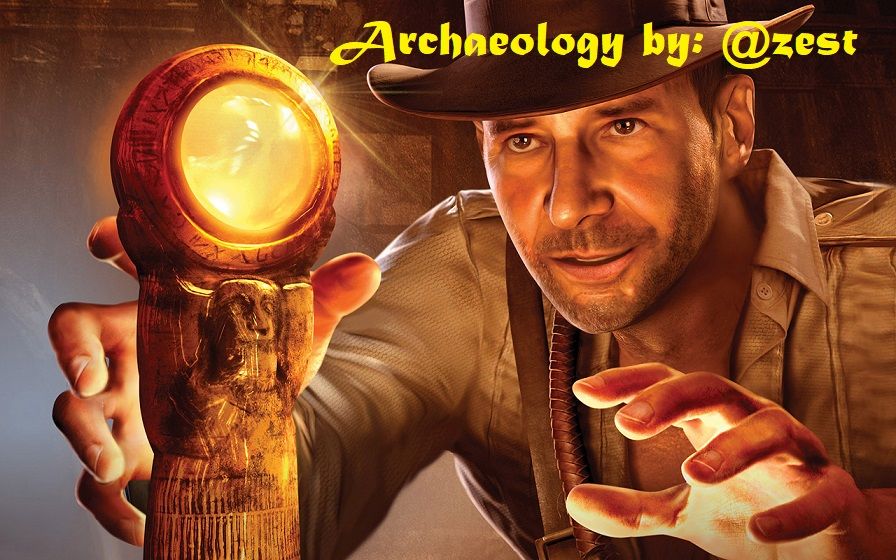
Dear Reader
In this following series of posts we are covering the Later Stone Age of South Africa, I highly encourage you to please read the Introduction, Historical Background, Advances in Later Stone Age, Climatic conditions of the LSA in South Africa, Elements characteristic of the Later Stone Age, The Later Stone Age sequence, Early Later Stone Age: Robberg assemblages, Robberg Subsistence Economy, The Oakhurst, including Albany and Lockshoek non-microlithic assemblages, Wilton assemblages, Hunter-gatherers' way of life:Introduction, Hunter-gatherers' way of life - Ethnographical Evidence, Hunter-gatherers' way of life - Archaeological Evidence and Hunter-gatherers' way of life - Rock Art and Human Morphology posts to this series to bring you update to date with the information and terminology we have covered so far.
The Later Stone Age of South Africa : The Khoekhoe
Settlements and huts
Each Khoekhoe group had its own territory. Khoekhoe settlements were significantly larger than that of hunter-gatherers, and often included numbers of between 50 and 200 or more people. Each village contained members of the same patrilineal group (a group of male descendants of a particular ancestor) and their wives and children. Their huts (matjieshuise) were built of a frame of poles or branches, bent and fastened with leather thongs to form a framework over which woven reed mats were thrown. These huts could be dismantled, the mats rolled up and transported on oxen to fit in with the Khoekhoen's nomadic way of - this being roaming across the landscape with their herds and flocks searching for, and exploiting, seasonal resources (Hall 1986). The main settlements accommodated large numbers of people (in huts) and kraals for cattle and sheep. Smaller stock posts (sometimes in rock shelters) were mainly occupied by young men who would care for the stock during searches for better grazing.
Domestic Animals
The remains of domesticated sheep at southern African sites date to approximately 2000 years ago. Two breeds of sheep were historically reported, both of which were hairy rather than woolly and which possessed extremely large, fat tails. The larger Ronderib Afrikaner is today represented by small herds in the north-central Cape, while the hardy Namaqua Afrikaner breed is well adapted to drier conditions and is therefore more widespread. Sheep were more often used as a source of meat. Fat-tailed sheep are depicted in small numbers in most areas in the western Cape where rock art occurs.
The cattle remains from archaeological sites are several hundred years younger than the earliest deposits which contain sheep remains. Cattle were part of herders' lives from at least 1300 years ago onwards. They were important feature of the socioeconomic systems of the herders and we know that the Khoekhoen had great affection for their cattle. We know from written records dating back to the second half of the 17th century that large numbers of cattle were kept. The early European settlers at the Cape reported that the herders were reluctant to trade their animals. However, the remains of cattle are seldom present in archaeological deposits at herder sites and it would seem that they were selectively slaughtered. They provided milk and milk byproducts, but only occasionally meat, because breeding stock was accumulated as a form of wealth and therefore only slaughtered for special and ritual occasions.
There are, furthermore, no known paintings in the western Cape featuring cattle. Oxen were used as pack-animals for the transportation of people and household goods. Khoekhoe cattle were the ancestors of the modern Afrikaner breed, classified as part of the Sanga group of cattle that has evolved through inter-breeding of humped Zebu (Bos indicus) and longhorn cattle (Bos taurus). The Afrikaner breed is associated mostly with Khoekhoen and the Sanga with Bantu-speaking agropastoralists. Historical sources tell us that a system of clientship existed between the Khoekhoen and the San, where the latter herded the animals in return for some of the stock and milk. Cattle require a good water supply and ample grazing. The herds were therefore constantly moved to find enough pasturage, and this may account for the low archaeological visibility of herder sites. Herder groups raided each others' cattle. Disease and drought also played a role in limiting the size of herds.
Herders, however, also relied heavily on hunting and gathering, using Stone Age technology to supplement their resources. Dogs were used in herding and hunting, and are believed to have originated from closely related breeds of East African domestic dogs. The earliest date for dog remains originates from a shell midden (ie a mound of shells) at Cape St Francis in the southern Cape at approximately 1150 BP. Dogs also feature in rock art.
Pottery and metallurgy
There seems to regional differences in Khoekhoe pottery styles. Historical and ethnographic evidence is used to link pottery with specific groups. Some crude thick-walled bowls with grass temper and usually no decorations are historically known to have been made by the San. When decoration is present, it takes the form of heavily impressed stamped decoration. Before historic times the Khoekhoen fashioned pointed-base ceramic vessels, using quartz temper, with reinforced lugs for tying the vessels onto cattle. These vessels sometimes possess spouts for pouring milk. (Deacon & Deacon 1999; 184-185).
The Khoekhoen mined and worked copper. Iron was acquired from Iron Age agropastoralists north of the Orange River and in the eastern Cape. It is evident from historic accounts that, when they first came into contact with European sailors (ie in the late 15th century), the Khoekhoen possessed metal spears tipped with arrow heads.
Ritual, cattle and trade
The religious beliefs and practices of the KhoeKhoen were noted travellers and missionaries. Most of their rituals were centred on transition which marked the critical periods of change in a person's life, namely birth, puberty, adulthood, marriage and death. The particular rituals included periods of seclusion, avoidance, and the reintroduction into society. Feasting, in which members of the kraal and blood-relatives from other kraals joined, generally took place after rituals of reincorporation. Domestic stock played an important part in the ceremonies, as it did in the feasting that followed such ceremonies. Indeed, as we have indicated already, livestock were almost never slaughtered except on ritual occasions. Cattle in particular, but other domestic animals as well, were central in the social and economic practices of the Khoekhoen. This suggests that the Khoekhoen had a long association with domestic livestock.
The ritual and social significance that they attached to their cattle and sheep meant that the Khoekhoen were reluctant to enter into extensive trade with the Dutch at the Cape. They were, however, often coerced into non-productive exchange (livestock for copper,beads,alcohol,ect) and loss of stock resulted in herders' socioeconomic framework breaking down.
The collaspe of Khoekhoe society
Khoekhoe identity and econonmy broke down entirely within 100 years after the settlement of Europeans at the Cape (in 1652). This process happened so rapidly that we have limited ethnographic data on the economy and material culture of the Cape Khoekhoen. By the end of the 1800's little remained of the Khoekhoen's pastorial lifestyle. Many of them were displaced from their land and had to work as labourers for wages on farms and urban centres. Other Khoekhoen moved away from the Cape into sparsely populated areas to the noth in search of grazing land. In, turn, they displaced San and other Khoekhoe groups. Some of them took refuge on mission stations established for the indigenous population which guaranteed them access to the land around such settlements. These areas become known as "reserves" and continue to provide some form of security to the descendants of the Khoekhoen. Although some reserves in Namaqualand, such as Richtersveld, Leliefontein, Steinkopf and others, are relatively large, they are situated in isolated and marginal areas where the inhabitants struggle to make a living. Many of the Khoekhoen were absorbed into the coloured population. Intermarriage between European settler farmers and Khoekhoe women, in particular, was also common. After 1850 numbers of skilled and semi-skilled workers from other countries moved to Namaqualand to work on the copper mines and in the fishing industry. Some of them also married into the Khoekhoe populations.
Conclusion
Over the last few years, various sociopolitical and economic developments have helped the descendants of the San and Khoekhoen to regain their self-respect and identity. Their unique history and contribution to South Africa's heritage are now recognised. At the centre of new national coat-of-arms is a pair of human figures derived from San rock art. The figure is based on the well-known Linton rock art panel, now housed in the South African Museum in Cape Town. The new national motto - !ke e: /xarra //ke - captures the concept of "unity in diversity" in a San language. It is written in the /Xam language and follows the conventional rendering of click sounds that was developed by Wilhelm Bleek.
Images are linked to their sources in their description and references are stated within the text.
Thank you for reading
Thank you @foundation for this amazing SteemSTEM gif

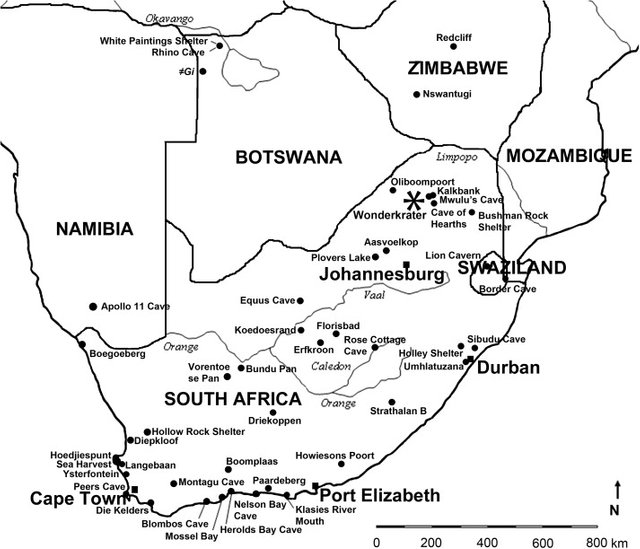
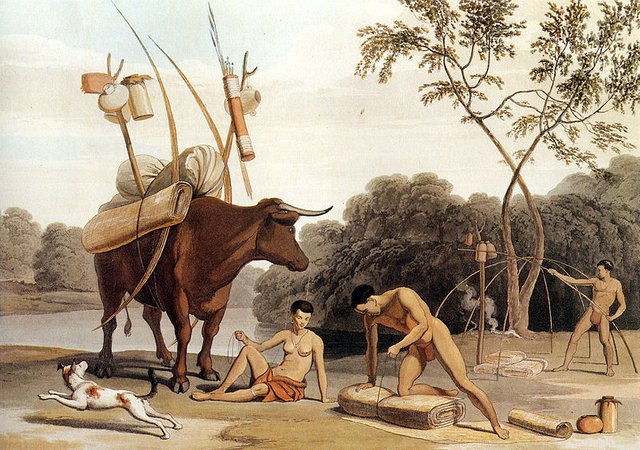
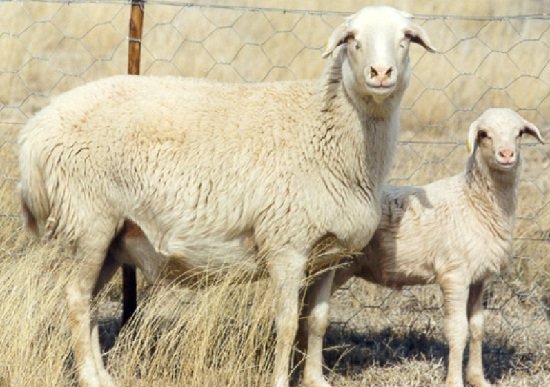
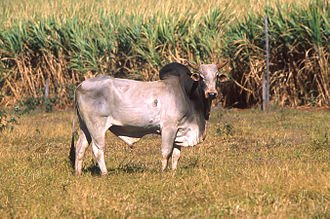
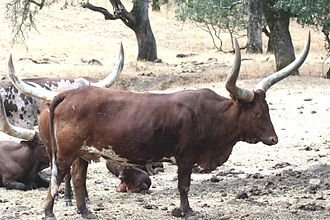
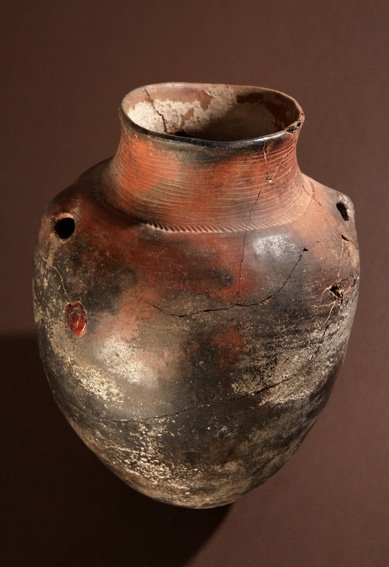

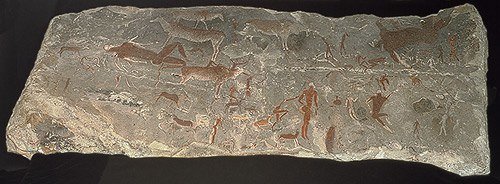
What a pleasant surprise to stumble on a post like this!
I've been really, really interested in the San since I realized that most of humanity's genetic make-up can be found in this group of humans...
Their pale white legs, their 'Asiatic'-looking morphology and phenotypes, as well as their art, culture and language are just so fascinating to me!
You've given me a new group of people to research now, the Khoekhoe!
Is one of the articles that you link at the top explain the relationship between the San and Khoekhoe people?
You mentioned how the San co-existed with the Khoekhoe, but having never heard of the Khoekhoe, I have to admit I can't say that I really know what to do with all this knowledge!
As far as I can tell, the San are some of the oldest, genetically-homogeneous group of people on Earth. They're still a 'virgin' people so to speak, living in the desert and staying away from all the hustle-and-bustle of European colonizer life
Am defo following you! Can't wait to learn more about all this!
These kinds of posts and knowledge are so very appreciated by an amateur anthropologist and Spiritual, Truth and Love seeking individual like myself!
Keep 'em coming! <3
Hi @imp.unity, Thank you for the absolutely brilliant comment. I have written on the San in my previous posts. I would like to invite you to become a member of SteemSTEM, I assure you that you will enjoy yourself amongst other like mind Steemit users.
https://steemit.chat/channel/steemSTEM
Looking forward to meeting you in the chatroom:)
Of course! Thanks @Zest :)
So that is a Science, Technology, Engineering and Maths Steemit Chat?
LOL, I'm somewhat familiar with the first two and utterly useless with the latter two haha
But maybe I'll learn a thing or too!
Joined and hope there's some lively conversations and interesting people there!
And now I'm off to look up sheep facts. Why do you do this to me? 😆
Was there any indication of how long the periods of isolation were? Was the person transitioning separated to symbolize an end or "death" of that persona and to let the image of them dim in the group memory? If so, maybe that made their "reintroduction " more like greeting a new person to the group?
I'm often amazed by the skill in rock art pieces. They did more expression with ground up stones and animal fat than people like myself (artistically stuck on stick figures) are able to.
The process of isolation is part of the ritual to manhood, timelines vary based on the individual accomplishing the tasks prescribed. Thank you for the excellent comment and support:)
Is the "Khoekhoe" the same with "Khoikhoi"?
I know the Khoikhoi originated from North Botswana. Never heard of Khoekhoe though. Thanks for letting me know about Khoekhoe.
Nice piece bro
They are the same, and you are right they migrated southwards from Botswana:) Well done buddy!!!!!
upvoted
thank you:)
Truly good stuff
Really, how much you researched is evident in this post. I salute your researching ability 👏👏👏. This post is nice. ...
How pleasant to take a walk back into our rich history. I also did not know about the Khoekhoe people. You are never too old to learn. They say you must never go to bed if you did not learn something in that day. Thank you for a most enjoyable read.
I LOVE this article. Great job. Archaeology is so awesome. I just posted this discovery to my blog. Please read it.
https://steemit.com/history/@shannonmccann/what-was-found-by-could-change-history-forever
nice information about stone age. please support me
The post is amazing